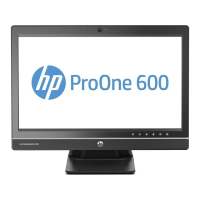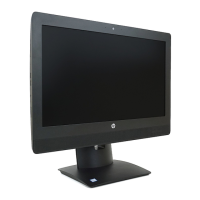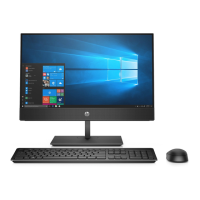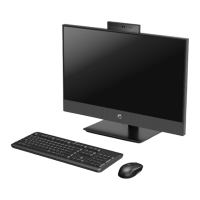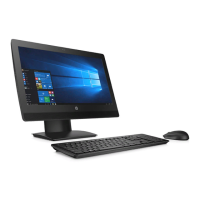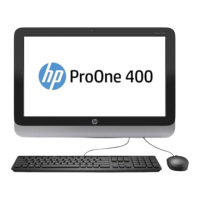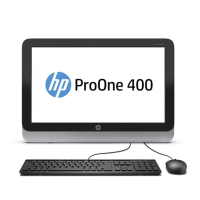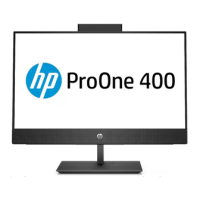Computer Setup—Advanced
NOTE: Support for specic Computer Setup options may vary depending on the hardware conguration.
Table 6-3 Computer Setup—Advanced (for advanced users)
Option Heading
Display Language Lets you select the language of the menus in F10 Setup and the keyboard layout.
Scheduled Power-On This feature wakes the system up from a powered o state at a specied date and time.
Boot Options Select the devices that the computer can boot from, as well as other options, including:
● Startup Delay (sec). Enabling this feature will add a user-specied delay to the POST process. One
purpose for the delay is to provide additional time to activate hotkeys such as Esc for the Startup
Menu or F10 for Computer Setup.
● Fast Boot. Default is enabled.
● USB Storage Boot. Default is enabled.
● Network (PXE) Boot. Default is enabled.
● After Power Loss. Default is Power O.
■ Power o—causes the computer to remain powered o when power is restored.
■ Power on—causes the computer to power on automatically as soon as power is restored.
■ Previous state—causes the computer to power on automatically as soon as power is restored,
if it was on when power was lost.
NOTE: If the system is congured to ‘Power On from Keyboard Ports’ (see Power Management
Options), then this setting is forced to ‘Power On’.
● Prompt on Memory Size Change. Default is enabled.
● Prompt on Fixed Storage Change. Default is disabled.
● Audio Alerts During Boot. Default is enabled. When disabled, most audible beeps from errors,
warnings, and password prompts during boot up are suppressed.
● UEFI Boot Order.
Default is enabled. Specify the order in which UEFI boot sources (such as a internal hard drive, USB
hard drive, USB optical drive, or internal optical drive) are checked for a bootable operating system
image.
UEFI boot sources always have precedence over legacy boot sources.
● Legacy Boot Order
Specify the order in which legacy boot sources (such as a network interface card, internal hard drive,
USB optical drive, or internal optical drive) are checked for a bootable operating system image.
Specify the order of attached hard drives. The rst hard drive in the order will have priority in the
boot sequence and will be recognized as drive C (if any devices are attached).
NOTE: To drag a device to a preferred place, press Enter.
NOTE: MS-DOS drive lettering assignments may not apply after a non-MS-DOS operating system has
started.
Shortcut to Temporarily Override Boot Order
To boot one time from a device other than the default device specied in Boot Order, restart the computer
and press Esc (to access the Startup menu) and then F9 (Boot Menu), or only F9 (skipping the Startup
menu) when the power button light turns white. After POST is completed, a list of bootable devices is
displayed. Use the arrow keys to select the preferred bootable device and press Enter. The computer then
boots from the selected non-default device for this one time.
Computer Setup (F10) Utilities 79
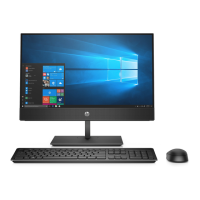
